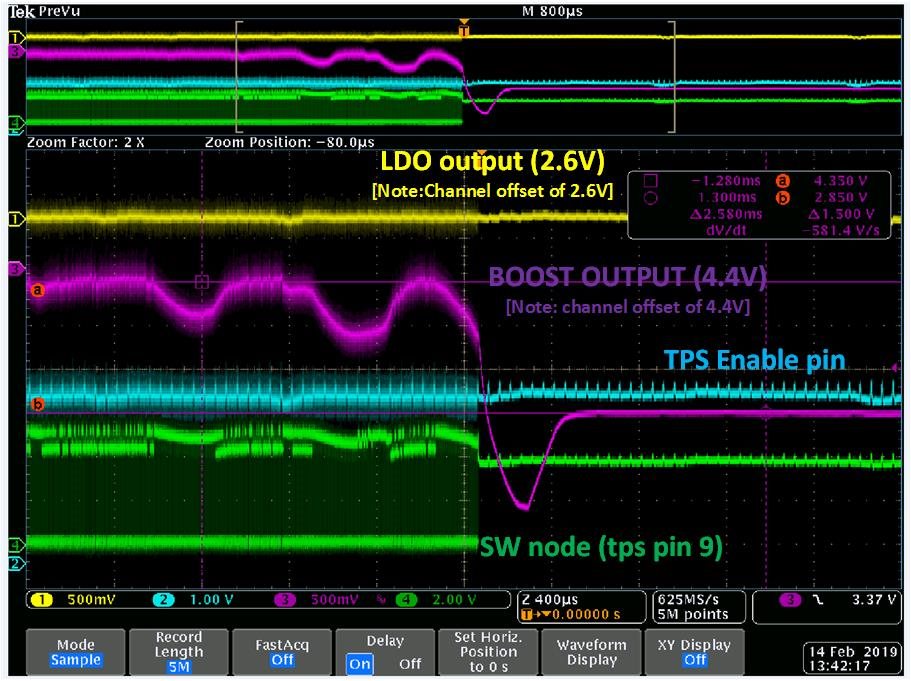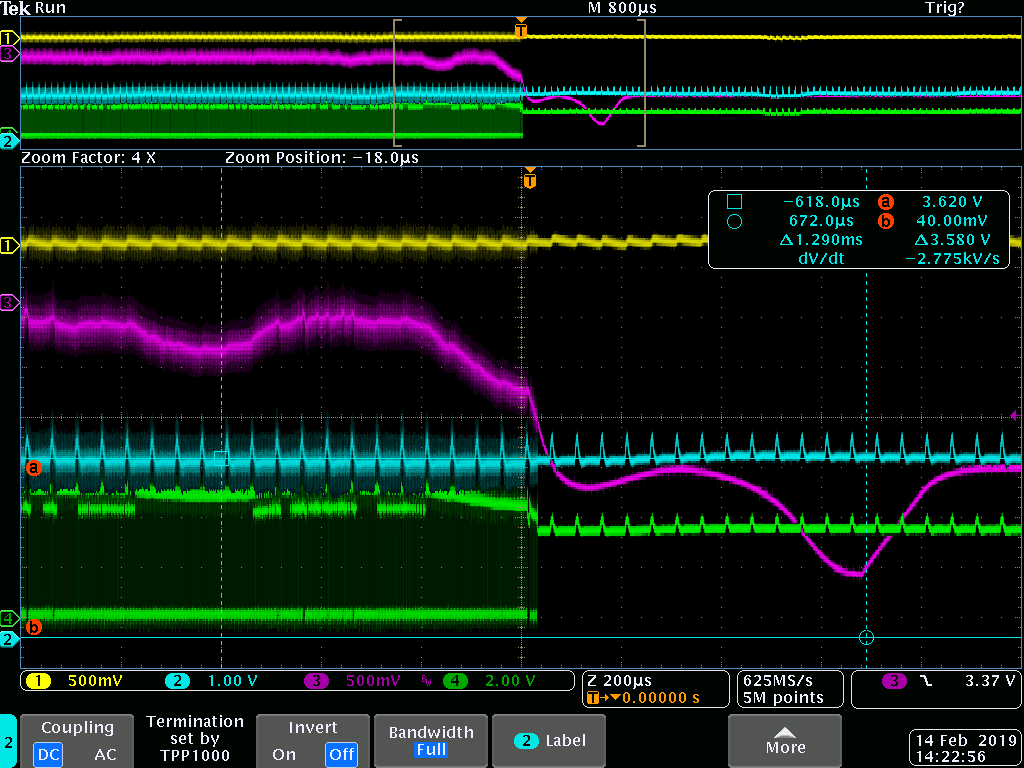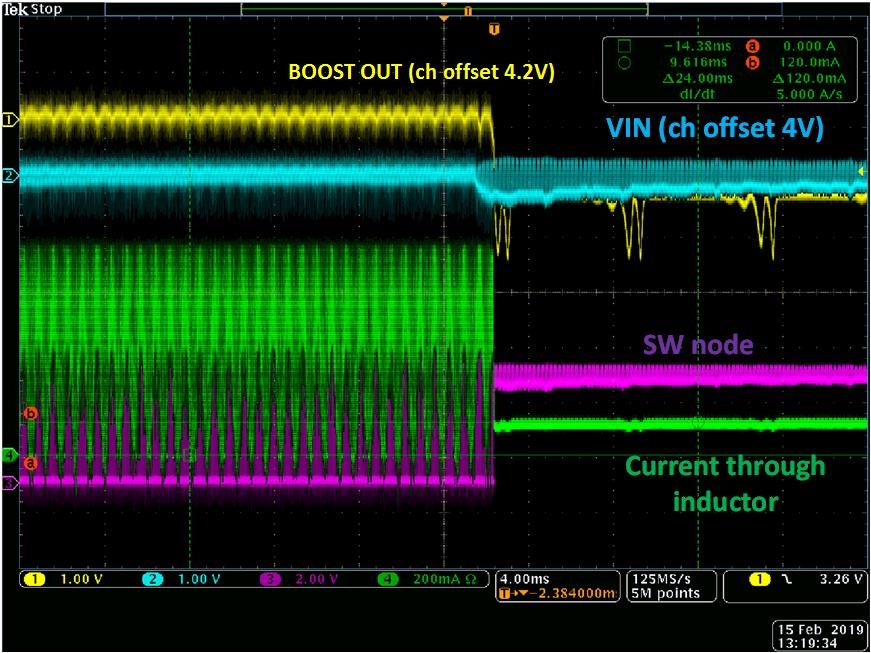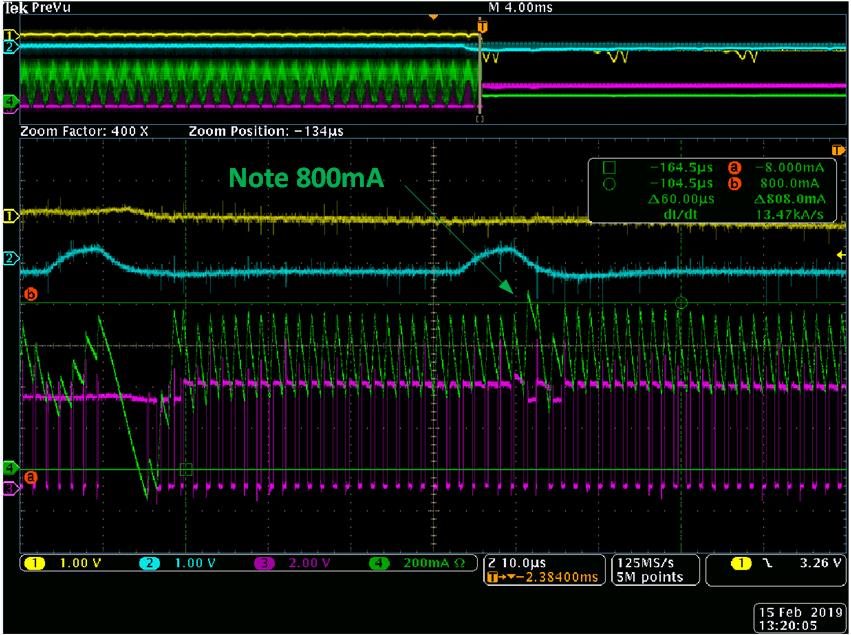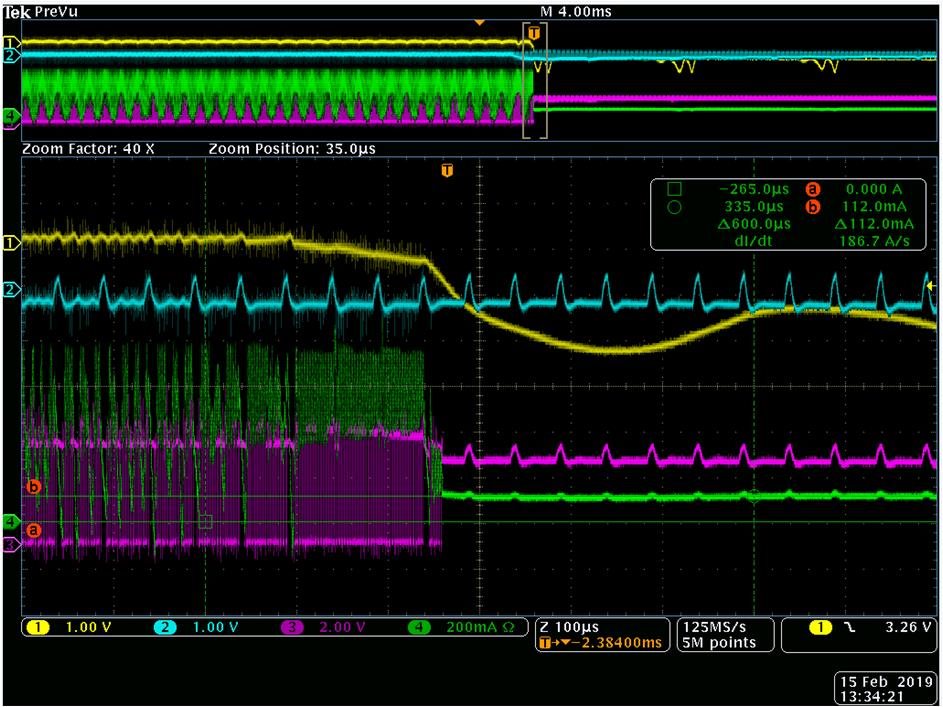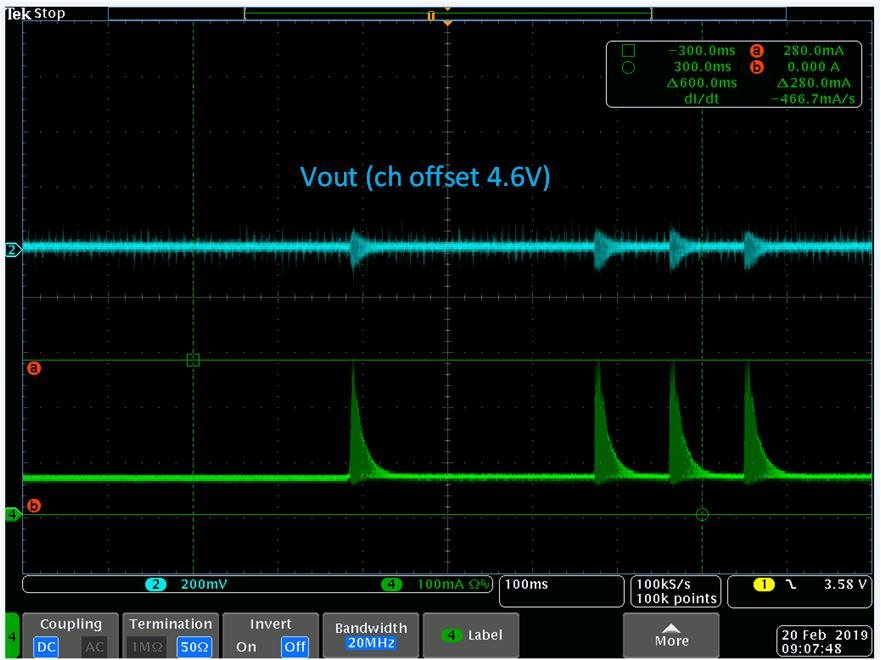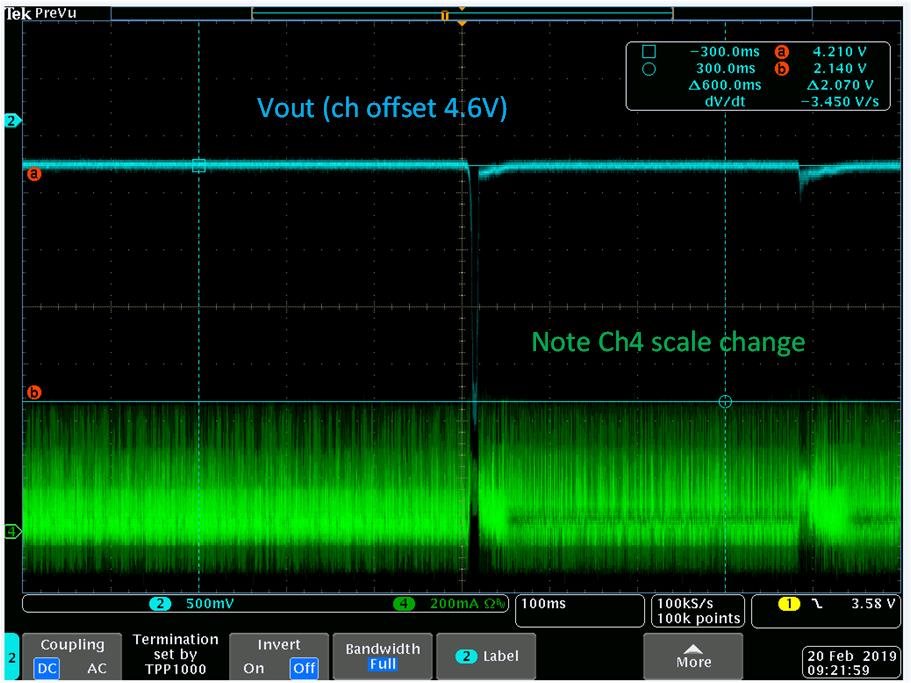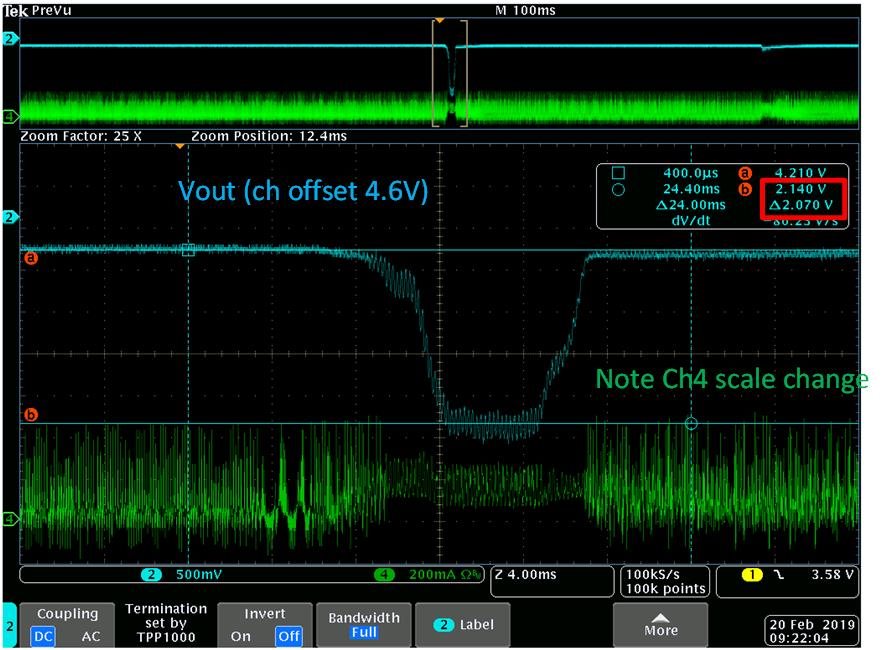Other Parts Discussed in Thread: TPS61020, TPS61029
Hello,
I am running into a reproducible issue on our design based on TPS61028. As I load down the output by exercising all of the devices connected to it simultaneously (to simulate worst case conditions), I notice that the output drops significantly and the switching node also stops. Initially I thought it might be due to reaching the current limit of 800mA output, but I do not read anything in the datasheet that would indicate that the switching would halt.
Attached is a waveform identifying the signals (note channel offset voltages do apply). I cannot explain this phenomenon, unless the device is being 'tricked' into down conversion mode. However, I would expect the device to recover and go back to switching properly.
Channel 2 (blue) is monitoring the enable pin of the device, to confirm that the controller does not get gliched to be 'disabled'
Channel 1 (Yellow) is monitoring the microprocessor's LDO output.
I have probed the SW node with a short ground probe during the higher current draws and low input voltage. I did not see any switching node voltage in excess of 7V for a significant period of time. Peak switching voltage was about 7.6V for approximately 5ns (low energy), measurement acquired with short ground probe and full bandwidth (1GHz).
Inductor choice is 4.7uH (Bourns SRP-2510A-4R7M). 10uF ceramic cap on input. 2.2uF and 22uF ceramic on output with 100m in series for ESR. LBI is grounded. LBO is not connected. PS is tied to VIN. FB resistors are 2Mohm and 270kOhm.
Layout of the design is very similar to that of the datasheet recommendation in section 13.
For thoroughness, I've also attached a waveform with the input voltage probed (approximately 3.6V).


